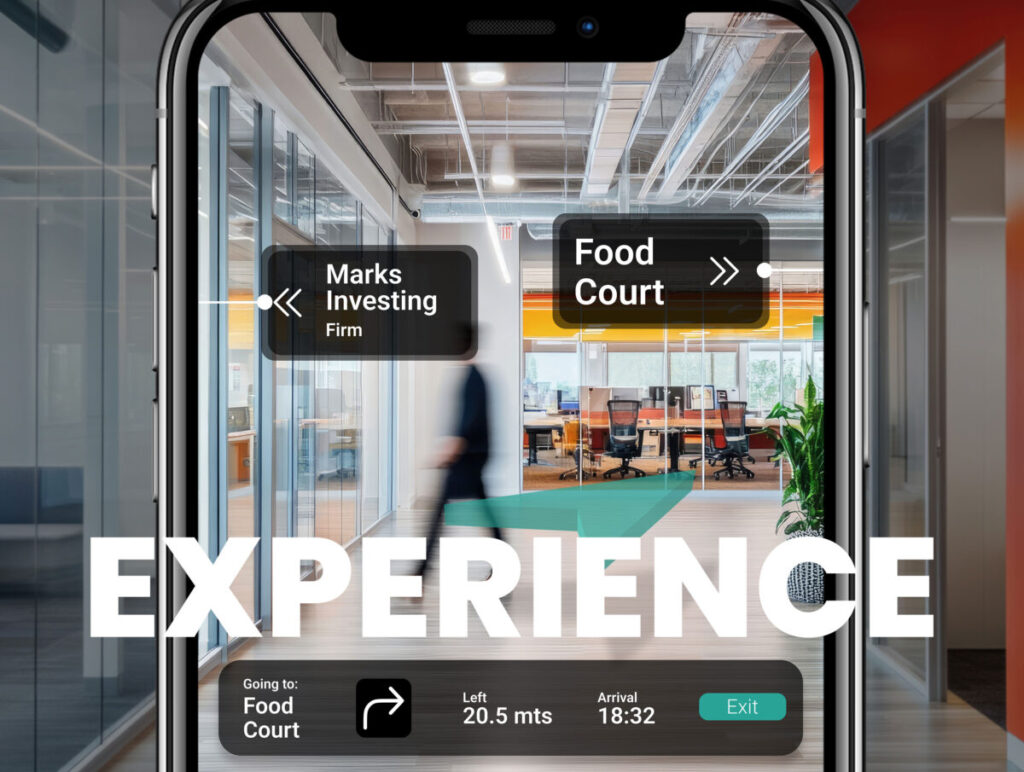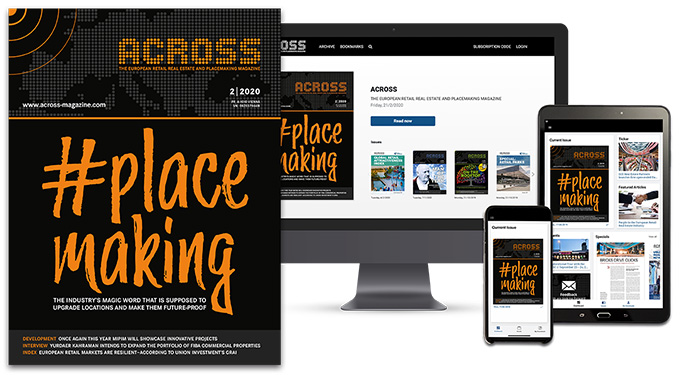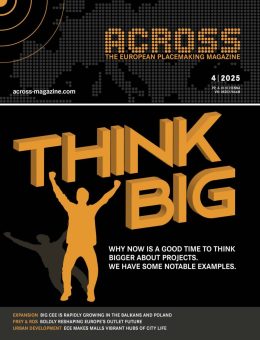Written by: Jean Carlos Delgado
While many European markets slowed in 2024, Nordic commercial real estate has remained surprisingly resilient. According to JLL, Nordic transaction volumes reached €17.5 billion in the first half of 2025 – 26% higher than the same period in 2024, making it one of the few regions in Europe to record year-over-year growth in investment. This signals that investors are looking beyond conventional metrics, such as ‘ location alone, and are rewarding assets that demonstrate adaptability, community value, and long-term resilience.
Commercial real estate has historically been defined by physical space – building it, leasing it, and maintaining it. Today, however, value is increasingly shaped by how people experience that space. Properties that deliver engaging, safe, and service-oriented environments are proving more resilient, with stronger tenant retention and more predictable income streams.
This shift is shaping what we call the Modern CRE Algorithm:
Experience → Insights → Growth
Experiences create engagement, engagement produces insights, and when used smartly, insights drive sustainable value. Success increasingly depends on the ability to think beyond the building and reimagine it as an ecosystem of people, services, and data. This is the modern CRE algorithm – one that allows properties to meet today’s challenges and build resilience for tomorrow.



EXPERIENCE – THE HUMAN FOUNDATION
In commercial real estate, the concept of “experience” has often been reduced to amenities: comfortable seating, free Wi-Fi, or a seasonal event calendar. However, these surface-level features miss the deeper reality. What truly defines experience is systematic trust and engagement – a property’s ability to make tenants and visitors feel safe, supported, and connected.
The market is responding. According to Deloitte’s European Commercial Real Estate Outlook 2025, 62% of investors now rank tenant and visitor experience among the top three factors driving asset value, often ahead of location. That finding is reshaping how owners evaluate their portfolios: Success is not just about physical occupancy, but about the quality of the ecosystem inside the building.
For Nordic assets, in particular, this shift is visible in how safety, resilience, and communication have become central to management strategies. As Erik Engstrand, CEO of Safe Asset Group, notes:
“Safety and resilience are more than operational requirements – they are the foundation of trust in the built environment. With SHORE, our international benchmarks and certification, assets are governed responsibly and built to withstand risk. This creates the conditions under which tenants feel safe, supported, and empowered to thrive. That trust is what elevates leadership in retail real estate – turning occupancy into engagement, and engagement into sustainable long-term growth.”

Erik Engstrand
CEO of Safe Asset Group
By embedding safety and communication into the core of operations, forward-looking owners are moving beyond traditional landlord-tenant relationships. They are curating ecosystems in which experience becomes a measurable advantage – driving higher retention, reducing churn, and strengthening community value.
This transformation sets the stage for the next step in the algorithm: converting engagement into intelligence. Because once experience is systematically captured, it can be translated into insights that guide smarter, more resilient decisions.
Herein lies the first principle of the algorithm: Without experience, there is no engagement; without engagement, there is no insight.
INSIGHTS: TURNING ENGAGEMENT INTO INTELLIGENCE
In the shift toward experience-first property management, the challenge isn’t simply capturing engagement – it’s making sense of it. Insights are the bridge between emotional connection and strategic value. Platforms like HyperIn are enabling Nordic property managers to collect data from tenant interactions, visitor movements, and service usage – turning raw engagement into reliable intelligence that informs operations, leasing, and long-term planning.
According to MSCI’s “Real Estate in Focus: Bumps on the Road to Recovery” (May 2025), while many European occupier markets were under pressure, several recorded above-inflation rental growth, hinting that tenants still reward environments that deliver experience, comfort, and reliability. Another report by Deloitte notes that over 68% of global CRE executives expect fundamentals like cost of capital and capital availability to improve through 2025, which suggests that CRE investment is increasingly being driven by confidence underpinned by data-driven decision making.
A few concrete sources of insight:
- Usage patterns and visitor traffic help identify underperforming areas or services that can be optimized.
- Tenant feedback mechanisms (surveys, maintenance requests, digital portals) create visibility into operational friction points.
Sales and leasing data, when combined with operational analytics (capacity, energy, footfall), give early warning signs before problems escalate.
As Markus Porvari, President and CEO of HyperIn, notes,
“Experience data is powerful, but its true value comes when it is translated into insights. The next leap will come from AI-driven business intelligence – making feedback faster to interpret, sharper in context, and more scalable across portfolios. Soon, what feels like fragmented tenant and visitor input will become strategic foresight – helping property managers anticipate change instead of reacting to it.”

Markus Porvari
President and CEO of HyperIn
This intelligence has practical implications:
- Property managers can shift from reactive maintenance to predictive maintenance: Issues get fixed before they become complaints, increasing satisfaction and reducing costs.
- Leasing teams benefit from insight about what tenants and visitors actually value – space usage, amenities, communication, safety – not guesswork.
- Investment decisions and asset positioning can be sharpened: You can see which asset types respond best to engagement (e.g., mixed-use, experience hubs) versus those under pressure (e.g., commoditized retail or unpopular location).
This shift reveals that technology isn’t just about efficiency – it’s about clarity: clarity in what to build, where to invest, and how to engage. Without insights, experience is just noise; with insights, it becomes strategy.
GROWTH: FROM INSIGHT TO SUSTAINABLE VALUE
Here’s where the algorithm proves its worth: growth that extends far beyond rental income. When Nordic property managers harness experience-driven insights, they unlock value across multiple dimensions – financial performance, competitive positioning, community impact, and long-term resilience.
The financial evidence is compelling. According to CBRE’s European Market Outlook 2025, properties with integrated tenant experience programs achieve 15-20% higher retention rates and command rental premiums of up to 12% compared to traditional assets. In Finland specifically, mixed-use properties that prioritize systematic tenant engagement are seeing occupancy rates that are 8-10 percentage points higher than the market average, even during periods of economic uncertainty.
However, growth in the modern CRE algorithm isn’t just about immediate financial returns. It’s about building competitive moats that compound over time.
Revenue Optimization: Data-driven insights reveal untapped revenue streams – from optimizing common area usage to identifying which tenant services generate the highest satisfaction and retention. Properties using integrated management platforms report revenue increases of 5-8% annually from operational improvements alone.
Community Value Creation: When properties become genuine ecosystems, they generate value that extends beyond their walls. Successful Nordic assets are becoming community anchors – destinations that draw visitors, support local businesses, and strengthen neighborhood appeal. This community integration translates directly into asset appreciation and reduced vacancy risk.
Adaptive Resilience: Perhaps most critically, insight-driven properties develop what we might call “adaptive resilience” – the ability to pivot quickly when market conditions change. Properties with robust data systems weathered the 2020-2022 disruptions more successfully and are now better positioned for whatever comes next.
The Nordic approach demonstrates that growth isn’t just a byproduct of good management – it’s the natural outcome of systematic experience design and intelligent data application. Properties that master this algorithm don’t just survive market cycles – they shape them.
LOOKING AHEAD: THE MODERN CRE ALGORITHM
Experience → Insights → Growth isn’t a slogan – it’s a practical framework for CRE managers who want to think big about future-proof assets.
This algorithm requires a fundamental shift in how we approach property management. Instead of reacting to market pressures, forward-thinking owners are using experience-driven intelligence to anticipate and shape market conditions. They’re building properties that don’t just house businesses – they nurture ecosystems where tenants, visitors, and communities thrive together.
The journey doesn’t stop there. Digital engagement platforms are evolving, and artificial intelligence is taking this algorithm to the next level – automating insights from vast data flows, predicting risks before they occur, and personalizing tenant experiences at scale. For now, the foundation is clear: Value begins with experience and is sharpened by insights. AI will make it faster, smarter, and more adaptive.
The future belongs to those who move with insight, not instinct. Increasingly, that insight begins with a simple recognition: Great commercial real estate is, fundamentally, about creating great experiences for the people who use it.

Jean Carlos Delgado
Brand and Marketing Director at HyperIn







